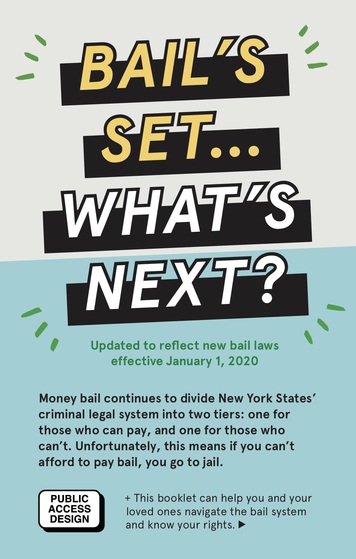For friends and family members of a person who’s been arrested, the act of paying bail is a stressful and confusing process. Beyond finding the money to cover the cost of bail, payers also have to decide how to pay. There are four options: unsecured bond, partially secured bond, cash bail, or bail bond. But there are big differences between them and people have important rights when paying with any of those options.
Those who don’t understand their rights are often taken advantage of and lose more money. This adds to the injustice of the bail system, which sends about 45,000 New Yorkers to jail each year simply because they can’t afford to pay bail.
CUP collaborated with Brooklyn Community Bail Fund and designer Alex Tatusian and Sharanya Durvasula to create Bail’s Set, What’s Next?, a guide that helps bail payers understand the difference between the four types of bail, and navigate the process of paying.
This booklet uses a series of scenarios to help individuals make informed decisions about how to pay based on their own financial situations. It also includes information on how and where to pay, when payers are entitled to refunds, and how payers can try to protect themselves from illegally high fees.
Note: This guide was updated from its original version to reflect New York bail reform laws that went into effect January 2020.
Get your copy of the booklet in English here. You can also download a Spanish version here.








